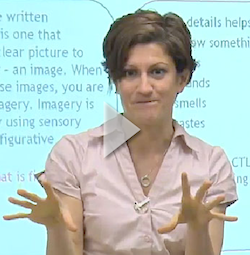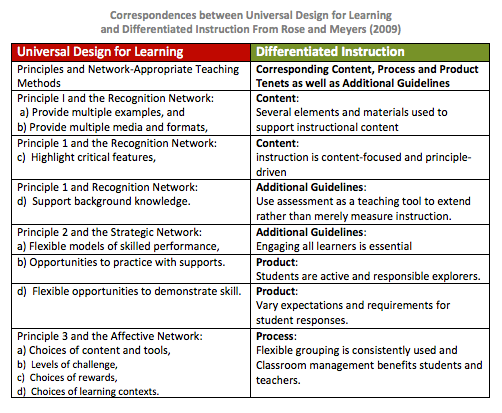Feel It? Common Core Energy Is in the Air
A MiddleWeb Blog

It’s all around us—it’s the focus of educators in more than 90% of US public schools. (The standards may be called by different names in different states, but they all trace their roots back to the CCSS documents.)
The nature of this energy ranges from feelings of exhilaration and anticipation for some to frustration and resistance for others. But the power of the standards is palpable everywhere.
Many classrooms are filled with deeper ways of learning – ways that shape students to be independent as they begin to transfer the necessary skills needed to succeed in future grades and careers. Co-taught classrooms have the added excitement (and yes, challenge!) of guiding students with disabilities to meet the same high expectations as their typically developing peers.
Some parents are embracing this challenge while many others are in an uproar – thinking their children must have a separate curriculum to meet special learning needs (I shudder even to type that misguided idea). Some teachers have wrapped their minds around the big picture and naturally align the standards – while other teachers seem to be overwhelmed with the idea of differentiating to meet the needs of every student in their class.
My energy is completely immersed in embracing the Common Core and what it can do for children. Just think about it: the role of educators (and I include parents as educators) is to guide children to gain knowledge, reflect on what they are learning, and express what they know and what they feel. It’s not our jobs to tell students what to think and how to express themselves. Let’s take a deeper look into what I mean….
What the Common Core Does

The more I come across parents, teachers or students who resist the Common Core, the more I wonder: Why would anyone want to stop a child from thinking and caring about what they think? Why would anyone want to stop the flow of authentic learning? Perhaps they just don’t see what I am seeing in the schools where I work.
Before the Common Core, students were taught to go through multiplication and division problems by simply memorizing sequential steps – which was really nothing more than students solving algorithms in superficial ways.

The Common Core curriculum creates thinkers who internalize and transfer concepts, not just memorizers who learn to succeed only in the moment. Take a look at any one of these videos by the Khan Academy to see what I mean.
What Co-Teachers (and any teacher in any classroom!) Can Do
It can go without saying, but I’m going to say it anyway. Effective teaching involves proactive planning; ongoing, thoughtful reflection; and considerable collaboration. If students are not getting what you’re teaching, then you must teach it another way. In fact, if you teach by applying multiple means of representation, engagement, and expression the first time you teach a topic, you won’t notice the need to go back and teach it another way.
Of course there are always going to be certain amounts of pre-teaching and re-teaching in co-taught classrooms. But when the principles of the Universal Design for Learning are applied proactively throughout lessons and modules, then the pathways to learning will be barrier-free and motivate students to connect and participate in personal learning experiences.
Here are three Can-Do steps any teacher can take:

Explore the importance of social emotional learning through the Collaborative for Academic and Social Emotional Learning (CASEL) website. You will be sure to get ideas to bring back to your classroom! When students believe in their abilities (regardless of ability level), then their positive Common Core energy will take them far.
(2) Create Ongoing Communication with Parents: Make sure both teachers in the room are actively involved in communications with all parents. I twitch at the “your students—my students” situations. Parents need to know that you are a team and you present a united front. And you are both applying your expertise to support rich learning environments.
Make sure parents have access to Common Core resources, so they will better understand the concepts—and, most important, the process. Keep positive, ongoing communication and accessible resources flowing out to parents. That flow can guide their Common Core energy in positive directions.
(3) Differentiate Your Instruction: Make sure you stay true to the Common Core curriculum. Accommodate or modify with integrity. Believe in your students. As you find their ability levels, you will identify the point of entry where you can align their needs with the Common Core concepts and standards. They deserve the opportunities to strengthen their knowledge base and their ability to problem solve.
Scaffold your instruction using the tools outlined in the modules. They provide so many opportunities to weave in additional visuals and kinesthetic learning activities to meet the needs of variable learners. Take a look at this chart:
Clarify your understanding of the relationship between Differentiated Instruction and Universal Design for Learning (UDL). Keep in mind, UDL is proactive – it considers the needs of all students and plans for the wide range of variability in order to break down potential barriers. Differentiated Instruction (DI) is a part of the UDL mindset and process, but DI alone can result in retrofitting students’ needs with curriculum expectations, which can lead to students being confused and lost in the moments of actual instructional time.
More Help with Natural Differentiation
Take some time to look through this link—you will get so much information on how to naturally differentiate within a UDL mindset as you apply the Common Core.

Making the time to differentiate instruction within the mindset of Universal Design for Learning will recharge and rejuvenate any teacher’s Common Core energy in the direction needed to guide students to achieve!
Where is your Common Core energy? Leave a comment if you’re in need of some spark and redirection as you connect Common Core with your students’ varied needs. Also, leave a comment if you have a successful story or tip to collaborate with our virtual colleagues. Let’s face it—collaboration is the key to succeeding in our Common Core world. So….let’s do it!
____
Remember to join us on Twitter for #coteachat on the 2nd and 4th Tuesday of each month (8pm ET) to discuss our co-teaching ideas. Also, join #udlchat every 1st and 3rd Wednesday (9pm ET) to discuss the ever powerful universal design for learning. See you then!



































Hi – I appreciate your post, but i can’t seem to find the Rose and Meyers (2009) reference that you used in your chart on UDL and differentiated teaching. Do you have the exact reference?
Hi, Iris,
Here’s the link where I got the chart: http://universal-design-for-learning.wikispaces.com/UDL+%26+Differentiation
Here’s another link to an interesting read on DI and UDL: http://www.cast.org/system/galleries/download/ncac/DI_UDL.pdf
I also highly recommend reading the latest UDL book by Meyer, Rose and Gordon http://udltheorypractice.cast.org/login
Thank you, and I would love to hear more of your thoughts on this post…
Where can the modules your reference found? “Scaffold your instruction using the tools outlined in the modules.”
Hi, Marie,
Great question! I should have included a hyperlink–thanks!
Here’a s link to the modules in NY: https://www.engageny.org/common-core-curriculum
And here’s a great link to Expeditionary Learning (just click and go to downloadable resources) where you will find protocols and resources to support powerful scaffolds–enjoy!
https://www.engageny.org/resource/grades-3-8-ela-curriculum-appendix-1-protocols-and-resources
UDL is a very thorough resource, and not something you can pick up and be implementing in-full the next day. Similar to MAP (http://map.mathshell.org/materials/index.php) for task-based instruction of mathematics. Since Elizabeth has a good deal of experience, many of the practices have likely become second nature to her. However, I believe the tools for differentiation she was referencing can be found here, http://www.udlcenter.org/implementation/examples
My advice is to find a couple of checkpoints that are valuable to you and pull out a nugget that you can implement in your class. The worst case would be that you get overwhelmed and don’t give it a try, so take it slow. UDL is a fantastic resource that can continue to serve educators throughout our careers.
Great advice, Evan–thanks so much for adding your valuable insights! In fact you sparked an idea for a future blog post–many thanks! All the best!